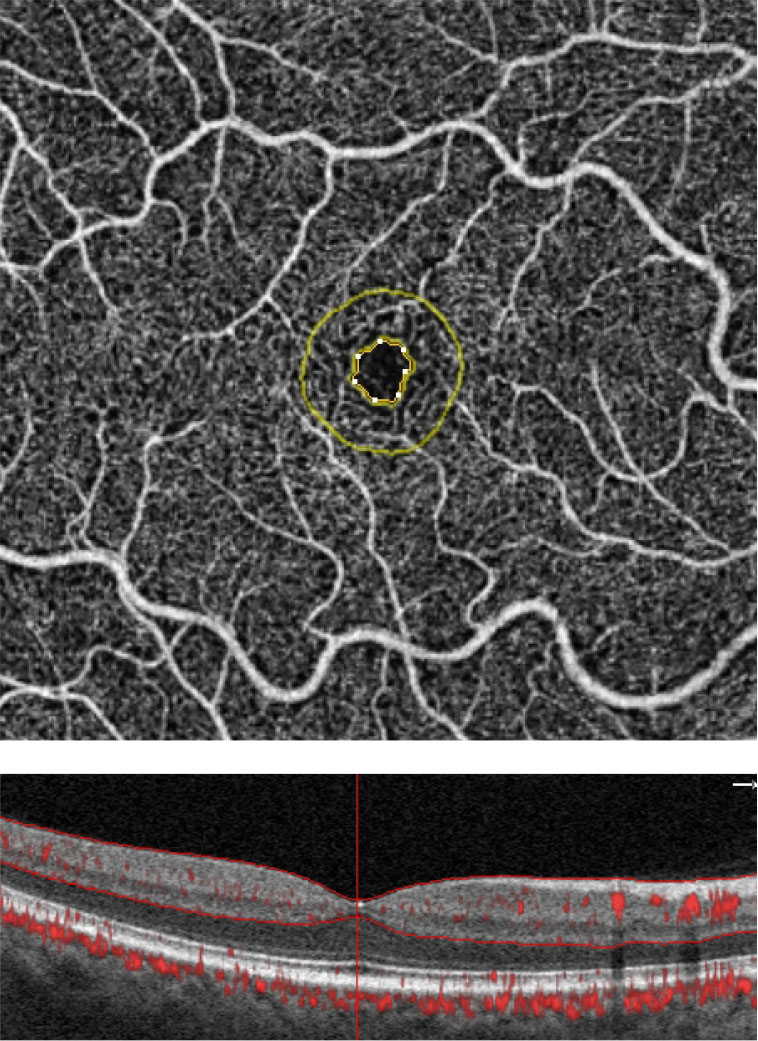 |
|
The difference in the distributions of OCT-A metrics between pregnant patients with anemia and healthy controls potentially provides a clinically useful monitoring tool. Photo: Julie Rodman, OD. Click image to enlarge. |
Anemia during pregnancy is a common maternal complication. Most cases during pregnancy are associated with nutrition and result from a deficiency of iron, folic acid or vitamin B12. Researchers were interested in whether anemia during pregnancy can be exhibited by other organs (such as the eyes) before the patient becomes symptomatic. They recently determined that OCT angiography (OCT-A) may serve as a rapid noninvasive tool for screening and potentially real-time monitoring of pregnant patients with anemia, who had a smaller foveal avascular zone (FAZ) area and perimeter, higher FAZ circularity and higher perfusion density in the center and outer regions of the retina than healthy controls.
The study analyzed 99 eyes of 99 pregnant patients with anemia and 184 eyes of 184 controls. Participants were further divided into pregnant patients with anemia diagnosed in the first trimester and pregnant patients with anemia diagnosed in the second or third trimester.
Linear regressions were conducted to evaluate the differences in OCT-A metrics between pregnant patients with anemia and healthy controls. Subgroup analyses were performed based on comparisons between pregnant patients with anemia diagnosed in the early or late trimester and healthy controls.
The shrinkage and irregularity of the FAZ were more evident in the second and third trimester anemia group than in the first trimester anemia group when compared with healthy controls. The first trimester anemia group showed more impaired microvascular perfusion (a larger flow deficit density) in the choriocapillaris layer than the control group did.
The researchers believe that their findings could likely fuel the growing interest in detecting pathophysiological mechanisms underlying anemia via the retina.
“Our research suggests that OCT-A could potentially serve as a novel noninvasive real-time detection tool for anemia during pregnancy,” they wrote in their paper for the British Journal of Ophthalmology.
The team believes that early detection could mean “timely care to pregnant individuals and help avert related adverse maternal and neonatal outcomes.”
Wu Y, Wang D, Wu X, et al. Optical coherence tomography angiography for the characterization of retinal microvasculature alterations in pregnant patients with anemia: a nested case‒control study. Br J Ophthalmol. November 25, 2022. [Epub ahead of print]. |


